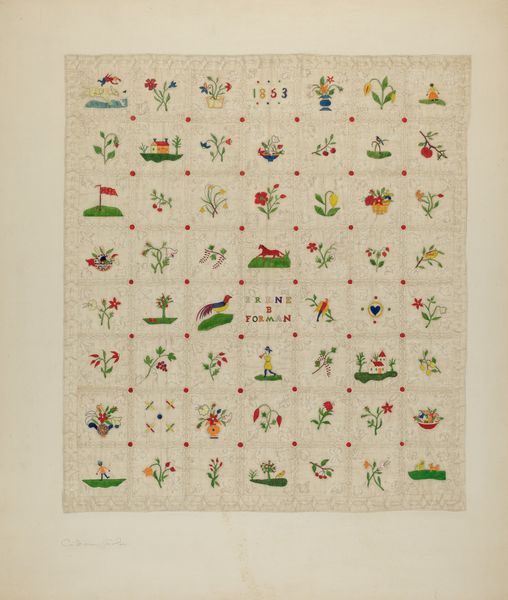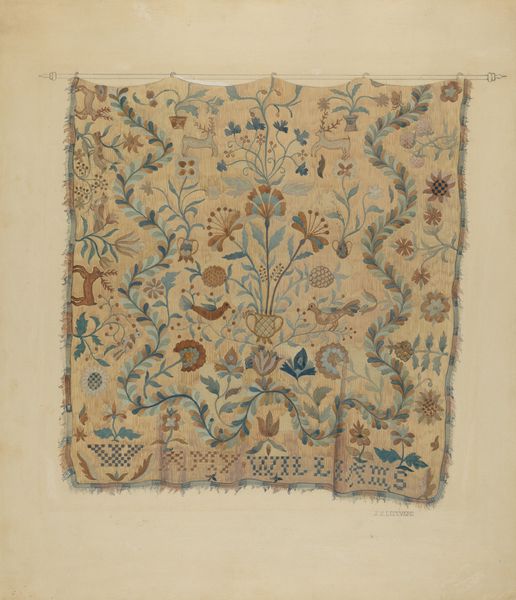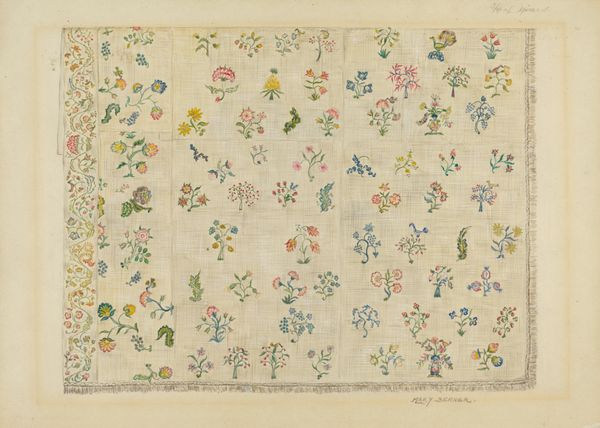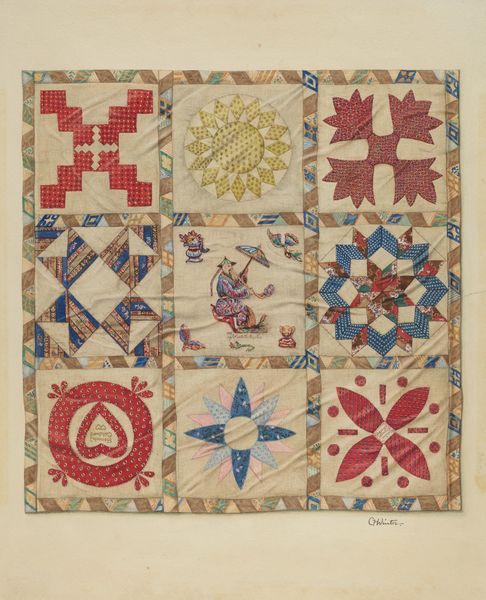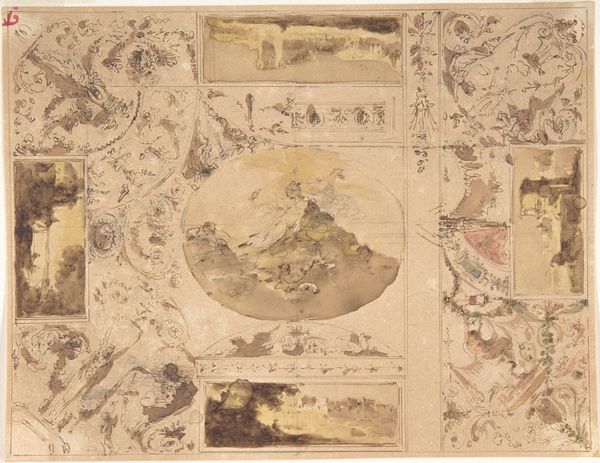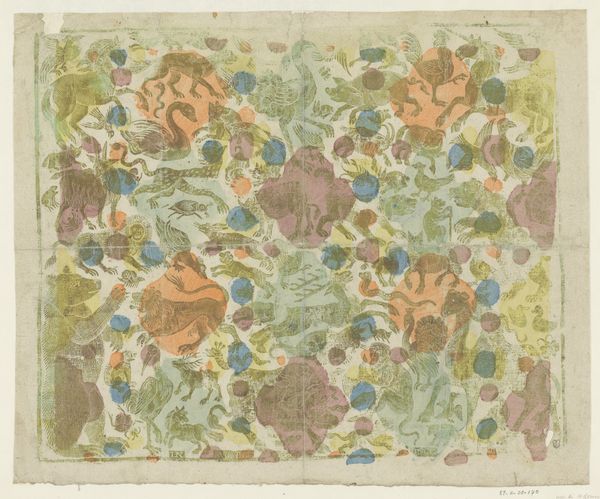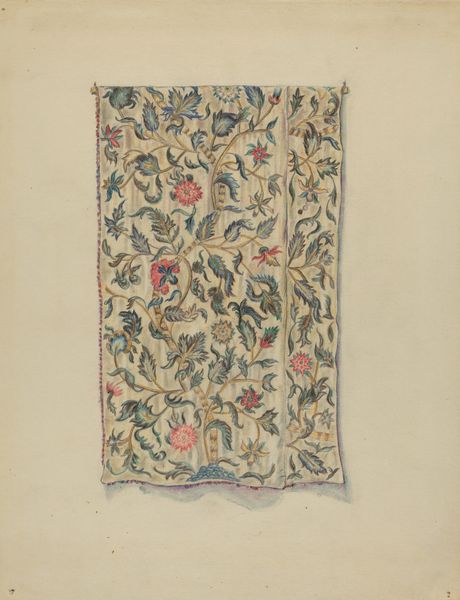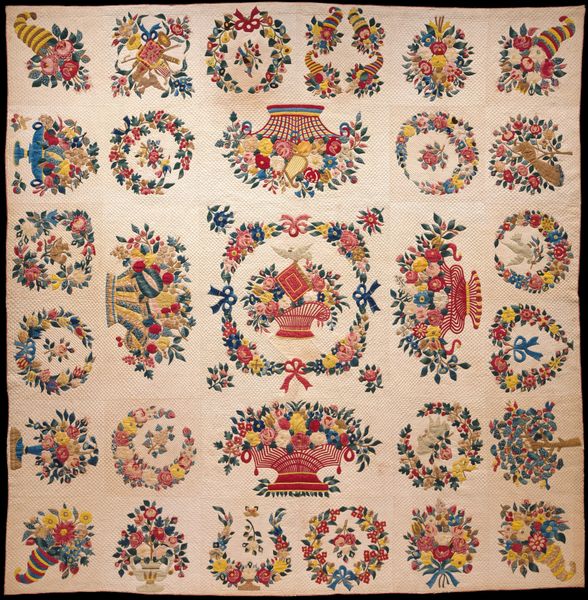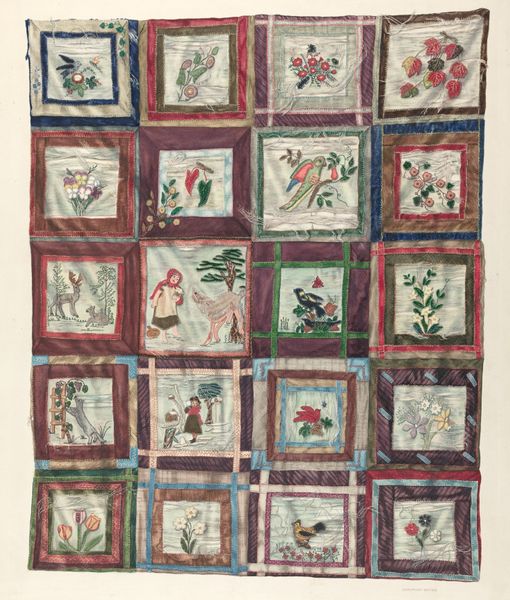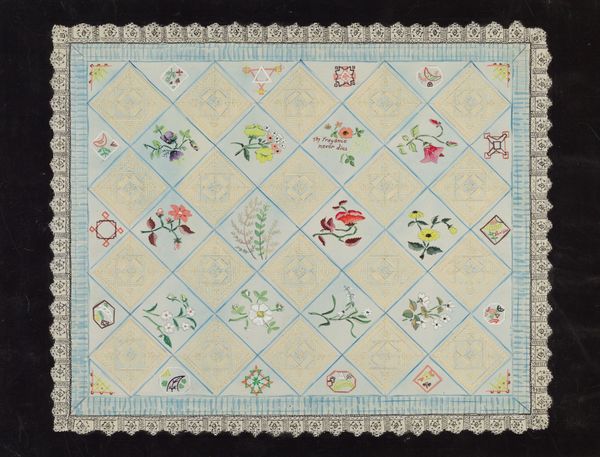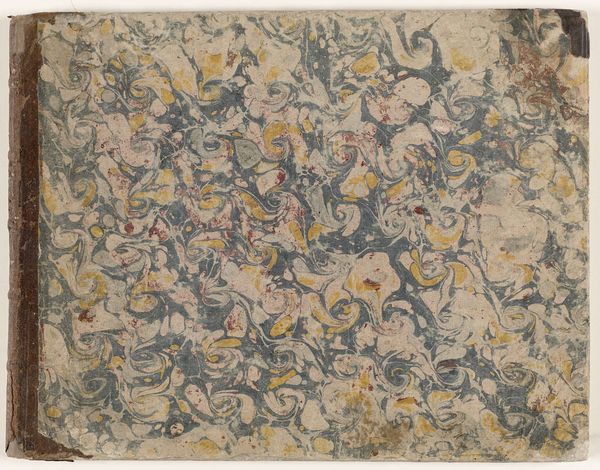
textile
#
folk-art
#
water colours
#
textile
#
folk-art
Dimensions: overall: 76.9 x 72.2 cm (30 1/4 x 28 7/16 in.)
Copyright: National Gallery of Art: CC0 1.0
Curator: Let's turn our attention to this captivating "Quilt," crafted between 1935 and 1942 by an anonymous artist. It's a textile piece incorporating watercolor and drawing, creating a patchwork of folk-art inspired imagery. Editor: It feels incredibly personal. The muted watercolours lend a dreamlike quality, while the grid-like composition suggests both order and a sort of charming randomness. I see traces of domesticity interwoven with Americana. Curator: Precisely. The grid structure, delineated with these delicate blue lines, contains a fascinating array of motifs. There are portraits, almost like cameos, alongside depictions of flora, fauna, and even American flags. The anonymous nature of the artist only heightens the questions—who made this and why? What narratives were they weaving? Editor: It prompts a crucial reflection on craft as a form of historical documentation. Quilts were historically made by women in communal settings as a space for creating community, making something functional and beautiful. Were they preserving memories? Critiquing social norms? Curator: Exactly! And the central square with American flags flanking other figures opens another lane of analysis. This particular period witnessed immense social and political upheaval. How did this creator see her place within the narrative of a nation grappling with immense challenges? It invites questions about nationhood. Editor: This piece could offer insight into not only identity but the ways of resisting historical amnesia within the collective imagination. How might we interpret the presence of portraits here, specifically during a time when political rhetoric often suppressed individual stories? Curator: Thinking about the materials employed, the use of watercolor, often viewed as less 'serious' than oil paints, speaks to the accessibility of artistic expression for many women at that time. Art making outside of the established institutions allowed women, especially women who were otherwise marginalised, to claim space. Editor: In my reading of this quilt, the artist’s vision becomes strikingly clear: art can be found and generated by those that can create and reimagine community. The grid that is made by this quilt does something more for the American political arena, especially by claiming an artist voice without a personal marker attached. Curator: It’s amazing to think about this artwork as both an act of artistic making and also as social commentary, subtly, stitched, and drawn in cloth and watercolor. It's a quiet revolution. Editor: It has prompted a re-evaluation of our traditional definitions of "art," moving us toward acknowledging art’s democratic spirit in even the humblest of media.
Comments
No comments
Be the first to comment and join the conversation on the ultimate creative platform.
